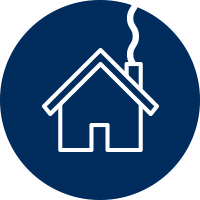
Learning Technologies -- Selection, Design and Application
ETEC 565A
The waters are getting choppy and I'm having to paddle faster to keep my kayak moving. I am happy to paddle with all the energy that I have as I am having a great time out on the water. ETEC 565A was a fantastic course that required a lot of time and energy. This heightened effort pushed me in a new direction.
During the progression of this course, my instructional design skills went from 0 to infinity in a matter of weeks, which felt like a blink of an eye. Truthfully, I had no idea what this course would entail, but I took it on with full gusto. The first assignment was the most troublesome for me as I had no idea which area to hone in on to teach. Coming up with a subject area to teach was the hardest choice I had to make. It determined my success in being able to confidently teach a particular content area, in a mode that I was not confident in teaching. There were a lot of skills and content needed to be learned.
I believe that my instructional skills became broader, as I acquired new strategies that can be applied in various avenues of online teaching. When I have the time, I would like to design a math challenge course for grade 5-7 BC students. I am finding that teachers are overwhelmed with the new curriculum and are having to differentiate for many students from varying levels of ability. If they had content for students who needed challenging tasks, then teachers would have more time to focus on students who need more face to face or one on one instruction. If I were to take ETEC 656a over again, I think the Math course is is what I would design in a Wordpress or Weebly platform as the ability to make pages more aesthetically appealing is important to me. Although, the ability to create quizzes and assignments and to keep track of grades on the Moodle platform, are also great features.
I appreciate the space to explore and delve into the various LMS platforms as my only experience with a particular platform was with Blackboard at this time. Because different platforms present positive and negative attributes depending on the nature of the course, various examples needed to be explored. I didn't realize the many open accessed tools there were available on the Internet for assessment and communication purposes, and I would like to further explore options for my current teaching practice.
The course readings helped me purposefully think about various aspects of my course design, that I would not have thought of. For example, the reading by Chickering and Ehrmann, discussed the importance of Social Emotional learning that is placed on the standards of learning. Throughout the writing of my course, the social and emotional needs of the potential students, would need to be in the foreground when designing assignments, using tech tools, and displaying specific content. As I read through the course content, and explored the various LMSs, I developed a greater appreciation for designers and instructors of online courses.
LMS Evaluation
The following is a report I had wrote with fellow ETEC 565A members. We worked collaboratively to evaluate the Moodle platform in consideration of implementing its use for the Gifted Outreach Programs in the Vancouver School Board.
Within our report, we introduced a description of the course organization, gave details about the reasons for implementation of Moodle, considered goals for the course organization, discussed the affordances and features of Moodle, and finally, addressed the sustainability of Moodle.
I have discovered that there is much to think of when designing a course and also in the decision to use particular learning management systems.
ETEC 565A ePortfolio
The organization of this course put theory into practice. Each student was required to create an ePortfolio organized into six sections where students posted course content and assignments. Home, was where the most recent content from the blog was displayed. Flight Path, contained each student's goals and objectives for ETEC 565A. Platform, displayed an evaluation of a learning management system. Introductory module, is where students posted the introductory module for the course that each student created, and the content module contains the post of the content module created. Finally, syntheses is where each student summarized their learning experience in ETEC 565A.
There are many aspects of the course that I developed that I would like to share. The link will take you to the UBC Wordpress Blog, but a student login is required.
Module Projects
This student-directed, completely online course, was designed for grade 11 students to prepare them for independent living after graduation. It is essentially a group of mini courses where students of varying abilities are able to pick and choose which skills they need to learn to live independently. It includes a preliminary compulsory module (Module 1: Personal Assessment of Current and Desired Skill Levels) where students will be required to develop a greater understanding of their current versus desired skills regarding: Personal Hygiene & Grooming, Personal Safety, and Management of Food, Household Management, Wardrobe Shopping and Selection, and Personal Affairs. As the final assignment of Module 1, students, in collaboration with their family and education advisors, will use the elective modules and/or units to design a personalized 120 hour Independent Living 11 course which reflects their individual educational needs.
To login and password to Independent Living 11:
kimberlyc
IndepLiv11!

References
Chickering, A. W., & Ehrmann, S. C. (1996). Implementing the seven principles: Technology as lever. AAHE bulletin, 49, 3-6.
ETEC 565A: Special Course in Subject Matter Field: learning technologies – selection, design and application. (n.d.). Retrieved August 09, 2017, from http://met.ubc.ca/etec-565a/






